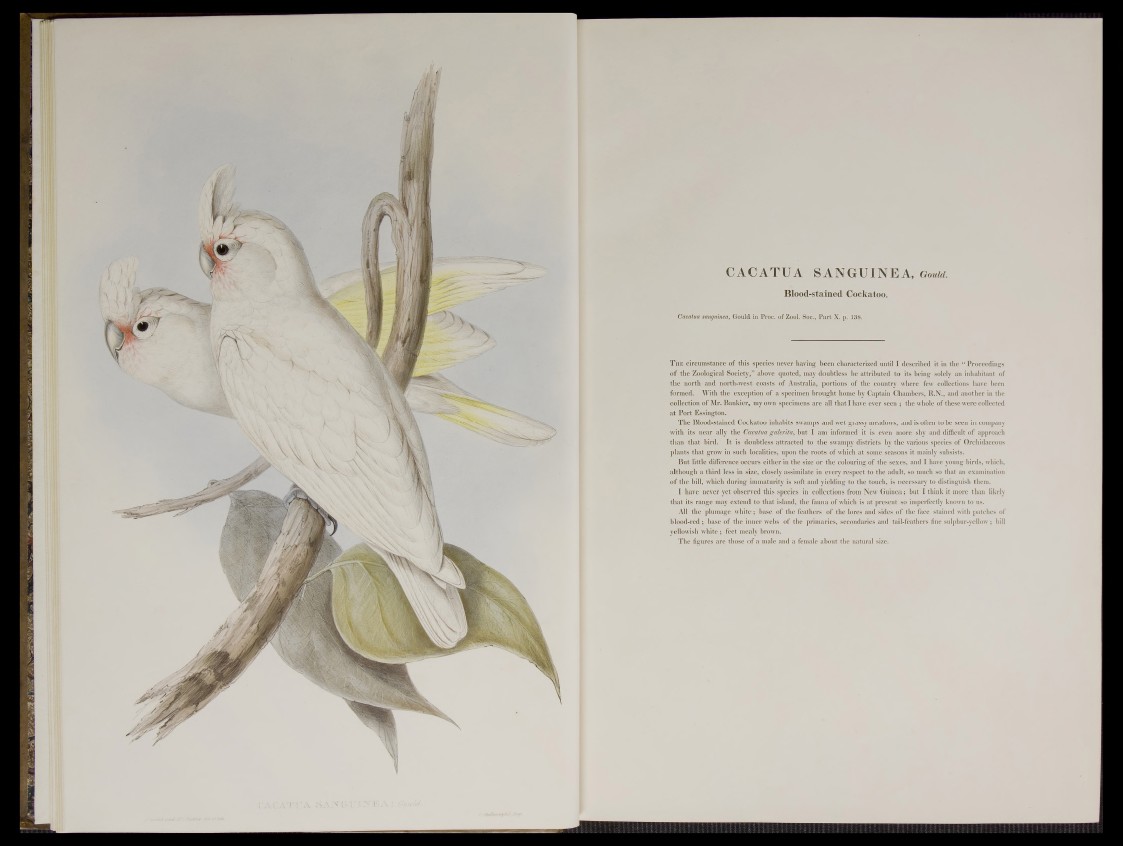
V ^ C ^ C A T l i p ^ ^ l J IN E A , Gould.
Blood-stained Cockatoo.
Gacatm sanguinea, Gould in Proq. o fZ ^ llgoc.. Part 2llft|l i38.
T he%ii^dstanccs*©f this%j^ie&meveF having been characterized until I described it in the “ Proceedings
may doubtless, be ItMlitecl. ig; inhabitant of
Blllgnorth and^nprjhnwest coajts-’ c^^mstraji^ppy^oiis of the country where "jew collections have been
:ffo^me(l; ^ With the exception of a specimen brought home by Captain Chambers, R.N., a©d another in the
collection'©} specimens S ^ ^ f t hat Jhave^ever seen: tbe w b o l^ ff these were collected
at
Th^ sBl^^^^ii^llfiCoblcatoO inhabits swamps and wet grassy meadows, and is often to be seen in company
w ith flt^ ie a r ajly'the CacatvagaZerita,,but I am Mnf^^^nlit is even more shy and difficidt ofapproach
than that bird. It is doubtless attracted to^the^swamhytdism^Mmlth e various species of Orchidaceous
plants that grow in such localities, upon the roots ^^ ^ c^hfe^ i^ e |seasQ ns it mainly subsists.
But little difference occurs either in the size or the colouring of the sexes, and I have young birds, which,
although a third less in size, closely assimilate in every respect to the adult, so-much so that an examination
of the bill, which during immaturity-is s ^ ^ ^ ^ ^ olHih'p^togthe^tmlc^^ necessarv to distinguish them.
I have never yet observed this species in collections from New Guinea; but I think it more than likely
that it§ , yange^may jixtfind to that island, the fauna of which is at present so i^S^ ^ tl^ ^ n ow n , to us.
All the plumage white; base of the feathers of the lores and socles of the face stained with patches of
blood-red ; base of the inner webs of the primaries, secondaries and tail-feathers fine sulphur-yellow; hill
yellowish white; fe§J^ehly:>%©wn.r - -
The figures a male and 'a female abOutthem^ ■?